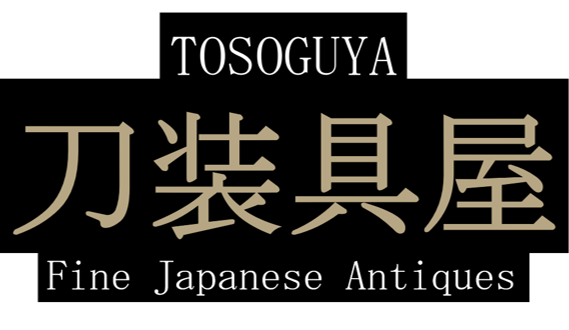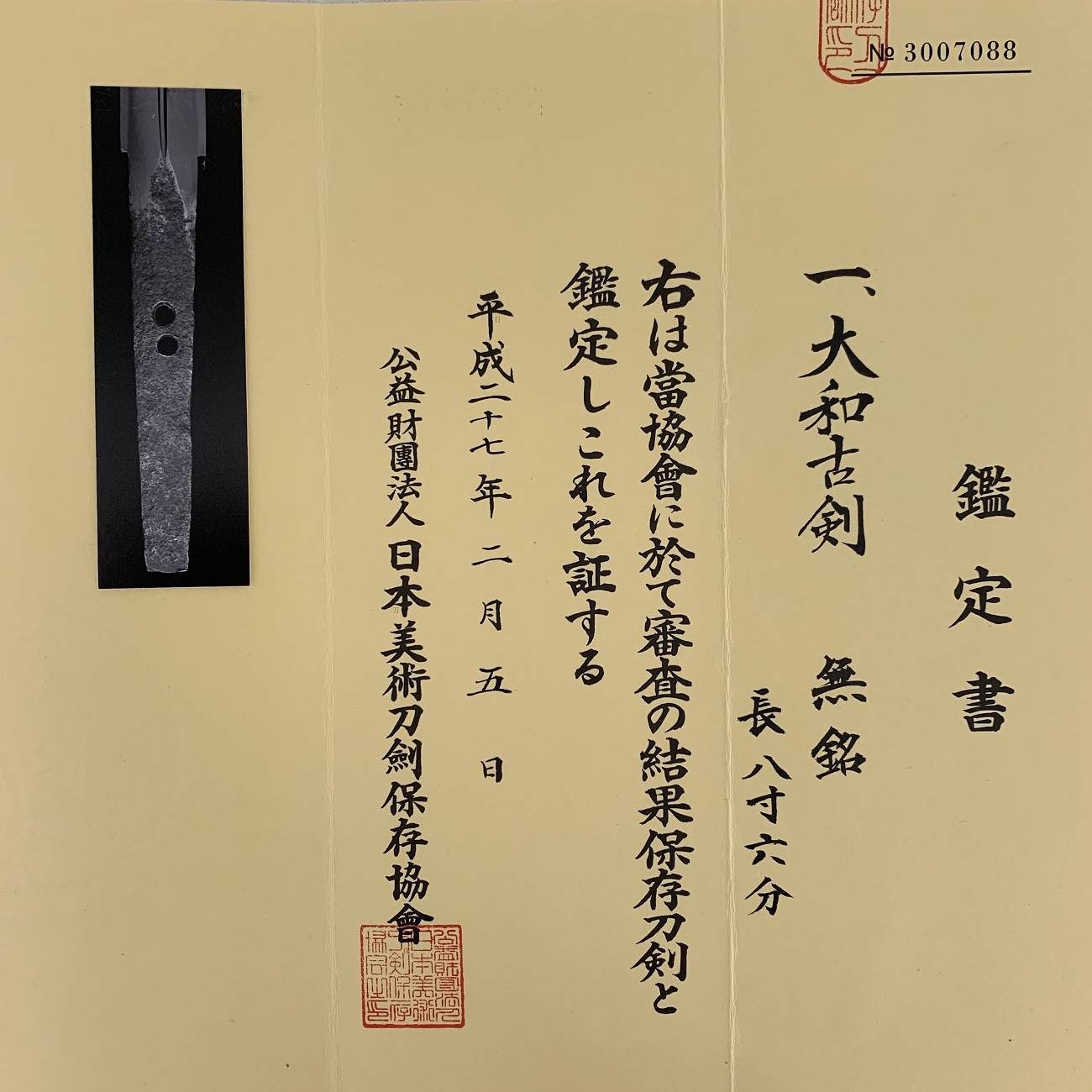

Classic early ken or tsurugi-style double-edged blade of the Yamato tradition. The Yamato tradition encompasses 5 schools: the Senjuin (千手院), Hosho (保昌), Taima (当麻), Tegai (手掻), and Shikkake (尻懸). The Senjuin school is earliest, and is thought to date to the late 10th century, deriving its name from the Senju valley region of Nara. The earliest phase of this school is termed Ko-Senjuin (古千手院), and reflects the work of smiths from the late Heian to early Kamakura periods. The earliest named smith is Yukinobu (行信), thought to have been active in the mid 12th century. He is attributed as the founder of the school, and a succession of smiths followed, carrying on the Ko-Senjuin tradition. Signed examples from Ko-Senjuin smiths are very rare, and workmanship in this school was not particularly uniform.
Likely Ko-Senjuin (古千手院) school as characterized by:
Sugata: Classic double-edged ken shape.
Jigane: Flowing nagare-hada with mokume. Ko-nie deki sometimes becoming quite reflective or rough, occasionally clustering (yubashiri).
Hamon: Hoso-Suguha with hotsure and occasional kuchigaiba.
Boshi: Suguha tends to sweep, forming features such as hakikake and nie-kuzure.
Ken-style blades are common to Ko-Senjuin, and were meant as Buddhist ritual implements or personal blades for Buddhist monks, not necessarily as fighting weapons. This example well represents the early Yamato tradition, and the most suitable school designation, based on the activity of the blade is Ko-Senjuin. NBTHK Hozon papers to "Yamato Ko-Ken", are regretably too vague. The overall condition is excellent, in unaltered (ubu) shape, and with little loss due to polishing.
Nagasa: 25.8cm, overall length 35.4cm
$7,500


